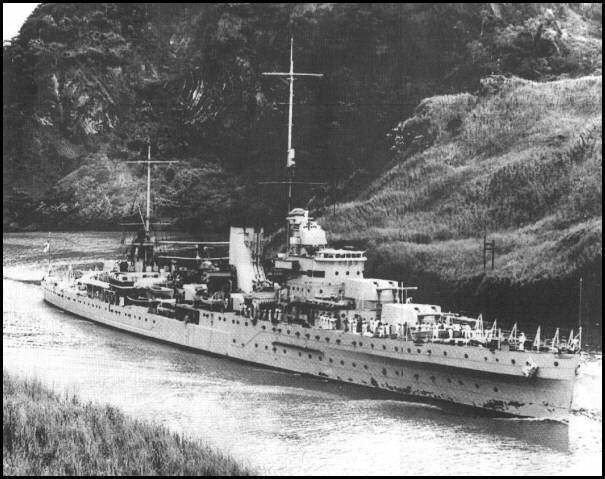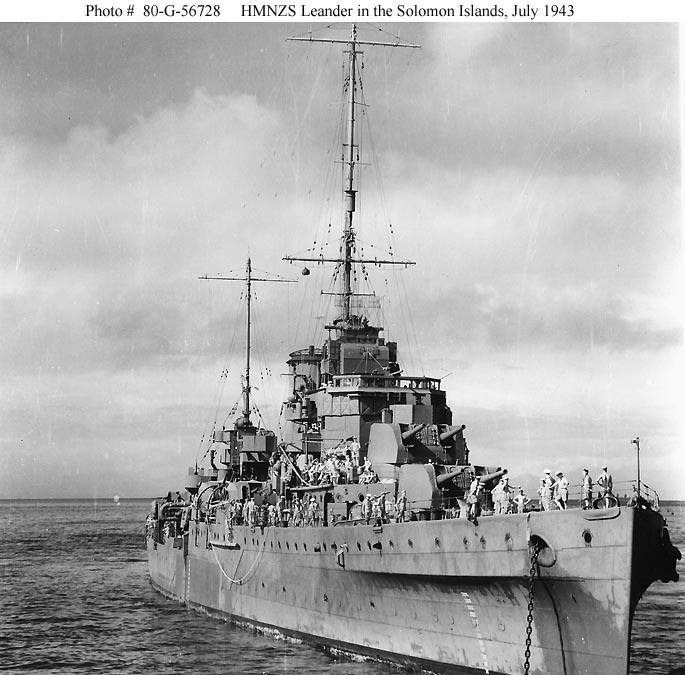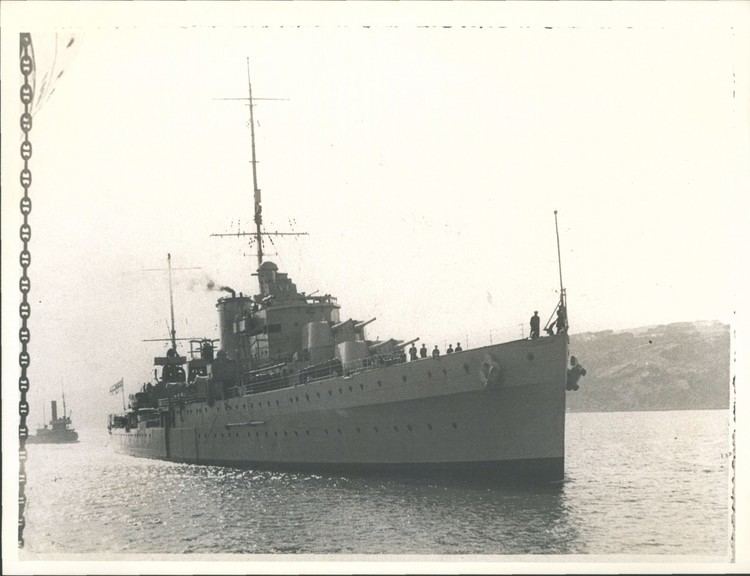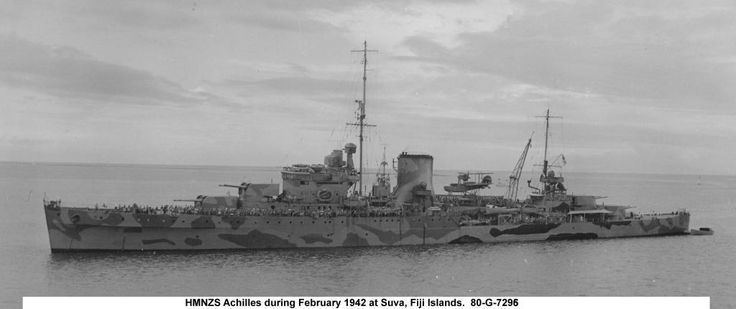Name HMS Leander Laid down 8 September 1930 Recommissioned 27 August 1945 Construction started 1 August 1928 Length 169 m | Ordered 18 February 1930 Commissioned 24 March 1933 Decommissioned February 1948 Launched 13 July 1929 Draft 5.82 m | |
 | ||
Hmnzs leander
HMNZS Leander was a light cruiser which served with the Royal New Zealand Navy during World War II. She was the lead ship of a class of eight ships, the Leander-class light cruiser and was initially named HMS Leander.
Contents

History

Leander was launched at Devonport on 24 September 1931. She was commissioned into the Royal Navy as HMS Leander on 24 March 1933. Along with Achilles she served in the New Zealand Division of the Royal Navy.

In 1941 the New Zealand Division became the Royal New Zealand Navy (RNZN) and she was commissioned as HMNZS Leander in September 1941.

In World War II, Leander served initially in the Pacific and Indian Oceans. Commander Stephen Roskill was posted as the ship's captain in 1941. In action on 27 February 1941, she sank the Italian armed merchantman Ramb I near the Maldives, rescuing 113 of her crew. On 23 March 1941, Leander intercepted and captured the Vichy French merchant Charles L.D. in the Indian Ocean between Mauritius and Madagascar. On 14 April, Leander deployed for support of military operations in Persian Gulf and, on 18 April, joined the aircraft carrier Hermes and the light cruiser Emerald. On 22 April, Leander was released from support duties in the Persian Gulf and took part in search for German raider Pinguin south of the Maldives.
In June 1941, Leander was transferred to the Mediterranean Fleet and was active against the Vichy French during the Syria-Lebanon Campaign. After serving in the Mediterranean, Leander returned to the Pacific Ocean in 1943.
On 13 July 1943, Leander was with Rear Admiral Walden Lee Ainsworth's Task Group 36.1 of three light cruisers: Leander and the US ships Honolulu and St. Louis. The task group also included ten destroyers. At 01:00 the Allied ships established radar contact with the Japanese cruiser Jintsu, which was accompanied by five destroyers near Kolombangara in the Solomon Islands. In the ensuing Battle of Kolombangara, Jintsu was sunk and all three Allied cruisers were hit by torpedoes and severely damaged. Leander was so badly damaged that she took no further part in the war. She was repaired, first in Auckland and then proceeded to a full refit in Boston.
She returned to the Royal Navy on 27 August 1945. In 1946 she was involved in the Corfu Channel Incident. She was scrapped in 1950.
The superyacht Leander G, owned by Sir Donald Gosling, is named after HMS Leander, the first naval vessel on which he served.
